Category Archives: Plumbing
Unless you’re redecorating your Cranston or Woonsocket bathroom with a “science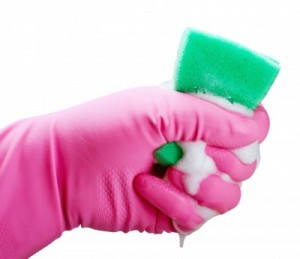 project” theme, mold growing on your ceiling is probably not the look you were hoping for.
project” theme, mold growing on your ceiling is probably not the look you were hoping for.
Mold can also cause serious structural damage to your home if left unattended along with respiratory problems, including severe allergies and asthma. So if you see it – mold, that is – attack it, because it’s only going to get worse.
Step 1: Treat the mold with bleach-diluted with water and a gentle detergent.
Put the solution in a spray bottle or use a sponge to lightly dab it onto the moldy spots. Either way, wear gloves and a mask to protect yourself from the noxious vapors. Also, don’t apply too much of the mixture to the ceiling; over-applying can saturate the ceiling and make it difficult to dry.
Step 2: Look for the source of the mold.
Mold grows from excessive moisture and warmth, so you’ll need to investigate to determine the source of the problem. Is the mold localized above the shower only? It could be that your ventilation fan in the bathroom is incorrectly connected and is not properly venting the excess steam from the shower. If there is no ventilation fan installed, then you’ll need to install one, but that won’t get rid of the mold you already have.
The problem could also have started above the ceiling in your attic or perhaps another bathroom directly overhead. Another bathroom could have leaking pipes in the floor, or perhaps the tub needs to be re-caulked.
If you have a leak in your attic, over time mold will begin to grow, especially in the summer when most attics are too hot for comfort.
Step 3: Prime the ceiling before painting.
Use an anti-microbial primer before repainting the ceiling. Otherwise, the mold stains can seep through your fresh paint.
Step 4: Repaint using specially-formulated bathroom paint.
Use a paint that is specifically designed for high moisture areas like your bathroom. It will help to keep mold from returning.
With our often hot and sticky summers here in Rhode Island, thousands of home owners experience mold-related problems. We know, because we get tons of calls for assistance. Today, like always, we’re ready to assist you in helping to make mold a thing of the past in your home and to help correct any problems it might already have caused. So contact Almeida Plumbing, Heating & Air today for fast and decisive action.
401-273-0040
Click here to request a quote or schedule service now
We’ve all heard the saying “If it ain’t broke, don’t fix it”. And more often than not, that is pretty sound advice here in Providence, Warwick, and throughout Rhode Island.
But when it comes to your home – and the plumbing that runs through it – we believe that an ounce of prevention is worth more than a pound of cure. And one way to prevent costly emergency plumbing repairs is through regular maintenance, including a video plumbing drain and sewer inspection.
A video inspection can uncover things about your plumbing lines that a routine inspection can’t. As a small camera attached to a flexible cable is pushed through a drain pipe or sewer, the camera operator can easily see any obstructions or damage to plumbing pipes, including:
- Sediment build up that, over time, can partially close pipes and restrict water flow
- Cracks and corrosion due to outdated material, especially in older homes
- Damaged sewer line due to root infiltration
- Off-set pipes caused by shifts in soil
- Leaking caused by broken seals between pipes
The information gathered during a video inspection is useful for several reasons. When planning a bathroom addition or kitchen expansion, a video inspection can tell you whether the current plumbing system can handle another sewer line.
If you’re thinking of buying a home, the information gathered can uncover hidden problems that could turn into expensive repairs for potential buyers.
And of course, if you’re dealing with low water flow, toilets that constantly back up, or sinks that repeatedly clog, a video inspection can accurately pinpoint the cause – and location – of the problem.
So, how’s the water flowing at your house? If it’s on the sluggish side or you have a flat-out blockage, contact Almeida today for fast and reliable results. We guarantee your complete satisfaction.
401-273-0040
Click here to request a quote or schedule service now
Did you know that common household water leaks can waste up to 10,000 gallons of water a year? A single faucet leaking 20 drips per minute wastes approximately 694 gallons of water a year all on its own. That’s enough water to do 17 loads of laundry in a typical top loading washing machine.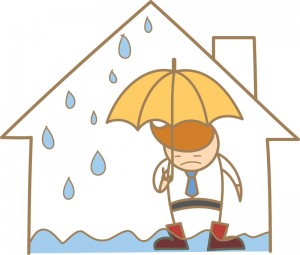
And that’s for water leaks you can readily spot and fix. But what happens when they’re not so easy to spot, as when water leaks behind your refrigerator from a cracked ice maker supply line? If the leak is small enough, it could be a good long time before you notice it. And the smaller the amount of puddling, the worse the problem might be if water is seeping through the flooring where it can eventually cause structural damage, problems with mold and mildew, and more.
In short, every leaking faucet or sign of a water leak should be treated with a sense of urgency. If you’re the handy type and have the right set of tools, you can resolve several leaking water problems on your own, starting with your kitchen sink faucet.
The first step is to determine what kind of faucet you have. Older, compression style faucets are prone to leaks with years of usage due to seal and washer corrosion. While less likely to leak, disk, ball, and cartridge faucets can cause problems once the O ring starts to break down or isn’t correctly installed in the first place.
Here are some common leaking faucet problems, and what it takes to correct them:
- Loose adjusting ring and packing nuts. If you experience a leak near the handle of the faucet, it could be due to loose parts. Tightening the packing nuts should eliminate that leak.
- Worn washer. If you notice water dripping from the spout, you might need to replace the washer in a compression style faucet. Each time a faucet is turned on, the washer is forced against the valve seat, and over time can cause the washer to wear out.
- Corroded valve seat. Another component of compression faucets, the valve seat can corrode over time due to water sediment build-up. Regular cleaning of the valve seat can keep the faucet flowing smoothly.
- Worn out seals. Similar to the valve seat, water sediment can corrode inlet and outlet seals in a faucet. While cleaning the seals can help prolong their use, worn seals do need to be replaced.
- The O ring. The O ring is the small disc attached to the stem screw that holds the faucet handle in place. With years of continual use, the O ring can become loose or worn out, resulting in a leak near the handle. In most cases, the O ring needs to be replaced.
For water leaks that aren’t so easy to fix or, worse yet, can’t readily be located, contact the plumbing professionals at Almeida Plumbing, Heating & Cooling for prompt and decisive action. We’ll determine the source and extent of the problem, advise you on the proper course of action, and make the necessary repair or replacement after presenting you with a guaranteed upfront price. Contact us to schedule service today or any time at all.
401-273-0040
Click here to request a quote or schedule service now
The first taste of hot weather is finally arrived here in the greater Providence area. It’s what we’ve all been waiting for, right?
That’s a huge “thumbs up” if your central AC system is in top working order. And a “Well, yeah, I guess so…” if it isn’t.
Here’s the thing. A lot of home owners are reluctant to call a professional AC contractor if their system is under-performing for fear that a big, expensive repair might be in order. The fact is, however, that your system might simply need a very affordable tune-up and inspection (including a replacement filter) to get it back running like its old self: or at least close to it.
Here’s another thing. Without annual system maintenance, your system is going to downhill a lot longer than it otherwise needs to. As it is, the average lifespan of a central air conditioning system is 10 – 15 years. With regular tune-ups and inspection, yours can effectively run and operate even longer.
In addition to a longer system lifespan, annual AC tune-ups deliver these important benefits: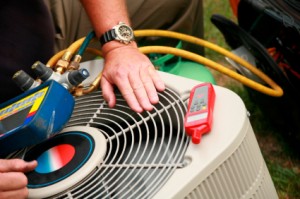
- Lower incidence of repair
- Less costly repairs
- Reduced risk of complete system failure: these are 35% more likely when the system is not regularly maintained
- Cleaner indoor air
- Safer operation as regular maintenance can detect faulty electrical wiring and refrigerant leaks
- Quieter operation, too
At Almeida Plumbing, Heating & Air, we want you and your family to make the most of your Rhode Island summer. So why contact us today to schedule our multi-point air conditioning tune-up and inspection. It’s your best bet for a long, cool summer.
401-273-0040
Click here to request a quote or schedule service now
What’s the first thing that comes to mind when you see a Cranston or Pawtucket plumber’s truck in your neighbor’s driveway? “Glad it’s not me!” Especially if the plumber has been called to fix a big problem.
The point is, sooner or later that neighbor will be you. Statistically, home owners need professional plumbing assistance every 3 years, and the top 3 plumbing needs are drain cleaning, toilet repair or replacement, and issues with your hot water supply.
If your time is now to look for professional plumbing assistance, here’s a quick guide on how to choose someone you’d be likely to contact again and even refer to friends and neighbors:
- Certified technicians. Technicians that are nationally certified bring with them a
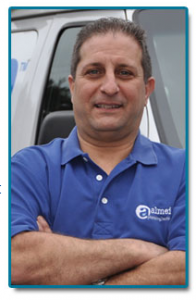 built-in advantage compared to other local plumbers. The professional organizations that provide the training and offer these certificates produce knowledgeable professionals that perform quality work.
built-in advantage compared to other local plumbers. The professional organizations that provide the training and offer these certificates produce knowledgeable professionals that perform quality work. - Guaranteed upfront pricing. When your plumber reports for duty, you shouldn’t be sweating over what the final bill will be. That’s why the right plumber will provide you with a guaranteed price quote before the work begins. And that’s it. No hidden fees or changing things up.
- Solutions for every budget. One size does not fit all, and prices are the same way. The plumber you choose should work with you to develop plumbing solutions that fit your home and your budget.
- 24/7 service available. Plumbing emergencies never happen at a convenient time and the right plumber knows that. Having service available around the clock is necessary to help you in a timely fashion and prevent severe damage to your home.
- Quality customer service. From your first phone call or email, to the technician in your home, to the follow-up call, the plumber you choose should be concerned with professionalism and your ultimate satisfaction.
At Almeida Plumbing, Heating & Air, we meet all of the above criteria, and then some. We’re not only concerned about your satisfaction, we guarantee it. Plus we’re master plumbers that have reached the pinnacle – by industry standards – of knowledge and excellence. If the today’s the day for you contact a plumber, give us a try. And then sit back and watch how we exceed your expectations.
401-273-0040
Click here to request a quote or schedule service now
No one looks forward to facing a plumbing emergency, why is that most of us do very little to prevent them? Hmm, good question, right? Well here’s the answer: by taking small, regular steps, you can prevent problem, let alone emergencies, from happening in the first place.
The kitchen.
- Keep your sink from developing a clog by using the powerhouse natural cleaning
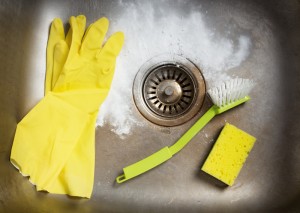 duo: baking soda and vinegar. Pour ½ cup of baking soda down the drain, follow it with ½ cup of white vinegar, and then let it “scrub” the inside of your pipes for about 30 minutes. Rinse the mixture down the drain with a gallon or more of boiling hot water. This combination also will help eliminate unpleasant odors.
duo: baking soda and vinegar. Pour ½ cup of baking soda down the drain, follow it with ½ cup of white vinegar, and then let it “scrub” the inside of your pipes for about 30 minutes. Rinse the mixture down the drain with a gallon or more of boiling hot water. This combination also will help eliminate unpleasant odors. - Don’t pour grease down the drain. Drain grease into a disposable container and throw it in the garbage.
- Clean the debris catcher in your dishwasher to keep the water draining freely.
The bathroom.
- Clear the drain traps of hair, biofilm, and gunk buildup.
- Make sure that waste matter and toilet paper are the only things being flushed down the toilet.
- If you notice persistent sewage odors, this could indicate that either your toilet isn’t properly sealed or that the vent pipes in your home aren’t doing their job.
The garage, basement, and attic.
- If any of these spaces are non-conditioned, make sure any exposed pipes are fully wrapped with insulation. You may have avoided frozen or busted pipes this past winter, but next year may be different, so prevent the problem before one occurs!
- Since your water heater is usually located in one of these spaces, take a few minutes every month to observe how well it’s functioning. Listen for high-pitched whining, strange popping or clanking noises, and look for water or rust stains around the bottom of the unit.
These and other preventive plumbing steps can spare you a world of trouble. Of course, if you’re reading this a day too later, contact Almeida Plumbing, Heating &Air for fast and reliable plumbing services: all makes, all models.
401-273-0040
Click here to request a quote or schedule service now
What if there was a way to have a little extra time at the end of your already busy day; something that could cut down on prep time in the kitchen, and make your life just a tiny bit easier. Well, hold onto the kitchen sink, because an instant hot water dispenser can do all that…and more.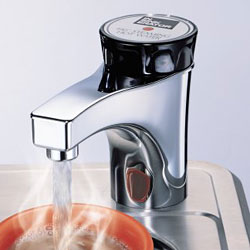
Whether you prefer sleek and modern, rustic, or traditional, an instant hot water faucet blends seamlessly into your kitchens’ décor. Mounted next to your water faucet and connected to your water supply, it delivers near-boiling, 200 degree water instantly for any task or purpose. The water is heated inside a tank that hides out of sight under your sink. Once the hot water starts to run out, the tank automatically refills itself so you never run out.
Now you no longer need to boil a pot of water on the stove for a cup of tea, or brew a pot of coffee for that one cup you crave. You can get a jump start on boiling pasta, rice, and vegetables, safely warm your baby’s bottle, remove jar labels and loosen lids, melt chocolate, and easily peel skin from tomatoes or peaches. And we’re just getting warmed up.
Not only is an instant hot water faucet convenient and a real time saver, it can cut down on your energy consumption and save you some money in the process. That’s because you won’t have to wait and wait for your regular hot water tap to produce water at the desired temperature, which it can’t do anyway. Nor will you have to crank up your stove and wait for a pot of water to boil. Same goes for using your microwave to heat up water…the need will no longer exist.
Now, Almeida can help you add a world of convenience to your everyday household routines and all for a very modest budget. To learn more or schedule installation, contact Almeida Plumbing, Heating & Air today.
401-273-0040
Click here to request a quote or schedule service now
Today people are more committed to reducing their environmental footprint. From hybrid cars, to solar power and reusable shopping bags, the ways in which we can reduce, reuse, and recycle are seemingly endless. Your home provides countless opportunities to “go green”, and conserving water is one of the easiest, Pawtucket Plumbing.
The average family of four uses between 116,000 and 146,000 gallons of water a year. Most of that water is literally going down the drain. Think of all that wasted water, in every home in your neighborhood, and every neighborhood in every town. And then think if everyone took a small step to conserve just a little of that water. We’re here to help you do your part with these five simple ideas.
Upgrade Your Hot Water Heater
By replacing your existing tank-style water heater with an energy efficient tankless water heater, you will not only conserve water, but save on your utility bill. A traditional water heater runs days and night, filling and heating water, whether you need it or not. By contrast, a tankless unit heats water only when you actually turn on a hot water faucet. .
Install low-flow fixtures and toilets.
Faucets use 16% of the water in your home. Showers use 17%. And toilets use a whopping 26%! Now imagine the water you can save by simply replacing your existing bath fixtures and toilets with low-flow models, and cutting that use by 20%. Most newer toilets use about 1.6 gallons of water per flush, as compared to older models that use between 3 and 6. And new plumbing technology ensures that you don’t have to sacrifice comfort, either.
Repair leaks.
Leaks can add up to over 10,000 gallons of wasted water in your home each year. The biggest culprits are running toilets, wasting 200 gallons of water or more per day. But don’t discount that little drip from your bathroom sink. One faucet dripping 5 drips per minute uses enough water to wash over 15 loads of dishes. And don’t forget the leaks you can’t see or hear, like those from your hot and cold water pipes and underground irrigation systems.
Insulate pipes.
If your hot and cold water pipes are easily accessible, you can insulate them with a few inexpensive materials. This will help reduce drips from condensation in cold pipes, and prevent heat loss in hot water pipes.
The “green” lawn.
Whether you’re reseeding or laying down a new lawn, look for grass varieties that are drought resistant. And only water your lawn when it needs it (if you step down on it and it springs right back up, it doesn’t need watering).
Contact us today for free quote on green plumbing fixtures and systems, including tankless water heaters, low-flush toilets, hot water tank recirculation pumps, and more.
401-273-0040
Click here to request a quote or schedule service now




